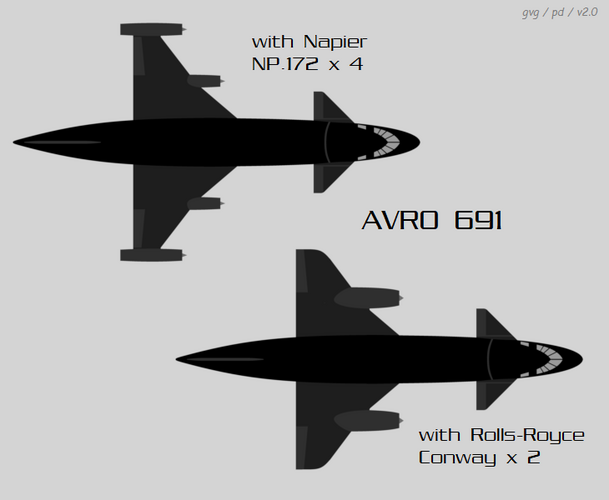Hi,
The P1121 was referred to in Hansard as the Hurricane II,
The early schemes for the A720 had an all rocket version piggybacked by a Vulcan with a combat radius of 100miles from the point of launch.
One assumes for obvious reasons that Jet-reaction controls would have been used in an operational aircraft to enhance high altitude flight control in a similar fashion to that proposed for the SR53 etc.
The P1121 was referred to in Hansard as the Hurricane II,
The early schemes for the A720 had an all rocket version piggybacked by a Vulcan with a combat radius of 100miles from the point of launch.
One assumes for obvious reasons that Jet-reaction controls would have been used in an operational aircraft to enhance high altitude flight control in a similar fashion to that proposed for the SR53 etc.
PaulMM (Overscan) said:Photos by Duncan Baxter from Avro Heritage visit - cutout from background.













